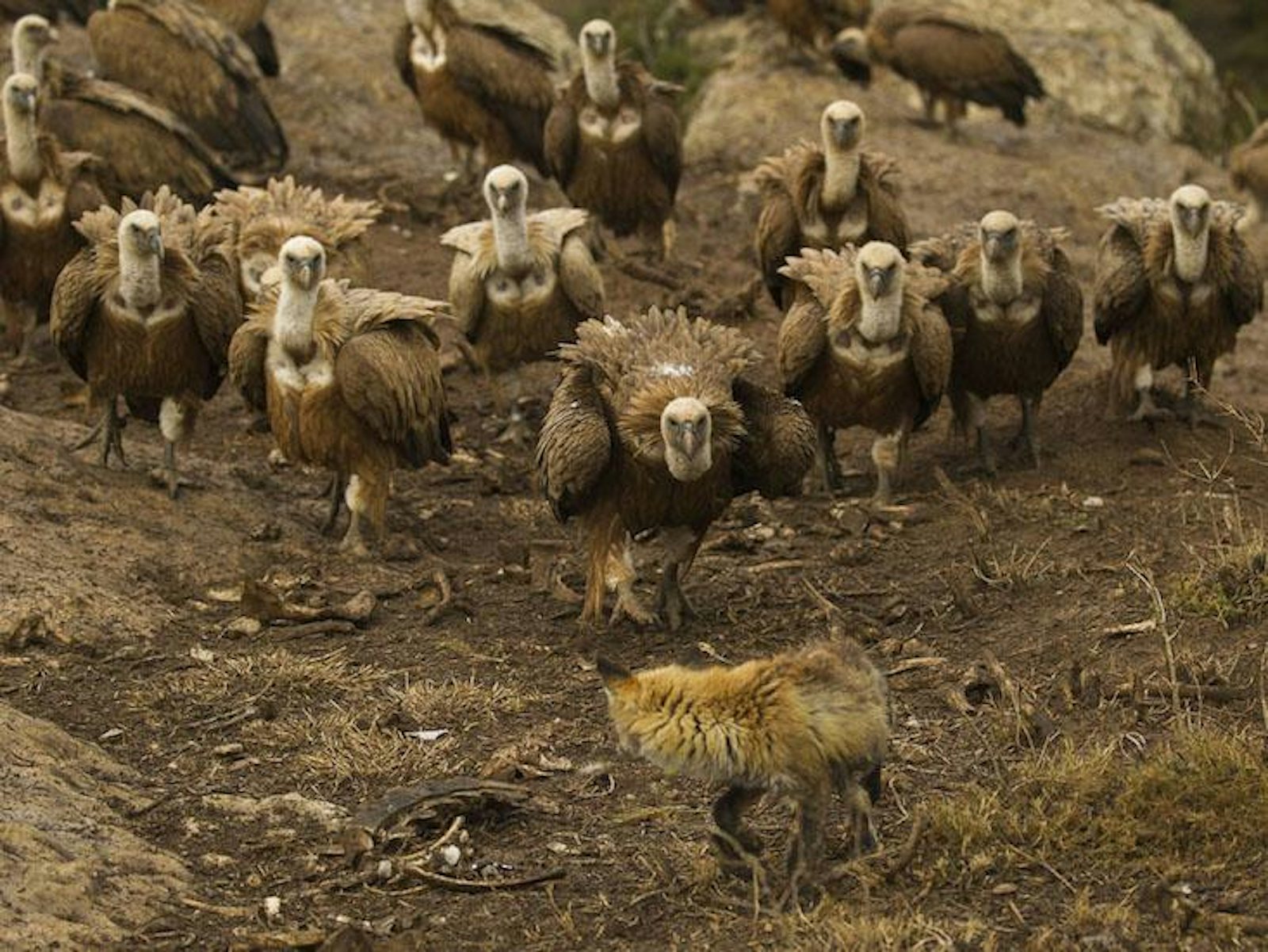When I tell Katie Sieving, an avian wildlife ecologist at the University of Florida, that it’s probably a stretch to call “mobbing” an act of heroism, she laughs. Mobbing, as the term suggests, involves a mob: It’s when a group of animals band together to harass and drive out a common predator—a behavior already well-known to the ancients by the time Aristotle described it in 350 BC, in Historia Animalium. Squirrels, fish, African ungulates, otters, and even insects will mob predators, but birds have developed it to an art form. Sieving calls the small North American songbirds she studies, known as titmice, heroes all the time. “They’re like the crossing guards of the forest,” she says, “letting the other birds know that it’s safe to cross.”
Different bird species regularly cooperate with one another to mob a common predator. That big commotion on the edge of the park, where dozens of birds are squawking, scolding, chirping and making little sallies against an unseen victim? They’re mobbing, and if you go investigate, you’ll probably find an owl or a hawk looking irritated as it skulks away.
The behavior has long intrigued scientists. While banding together to chase off a common predator may seem logical enough, it involves a surprising amount of risk, says Sieving. Mobbing is usually directed at a predator that is not currently a threat, and the activity is conspicuous. Other predators can swoop in for an easy meal, aware that the mobbing birds will be distracted. The significance of its function is still being debated. A seminal 1978 study determined that the main payoff from mobbing is increased knowledge of the local predators, and that has remained the accepted explanation for years.
Birds mob for the same reasons people go to parties. It’s a way to see and be seen.
However, scientists have recently noticed another benefit of mobbing: Birds do it to assess the quality of a neighborhood. Just like us, birds shy away from areas that seem sketchy or unsafe. Habitats disturbed by humans feels very sketchy to forest songbirds—these areas are typically more open, making birds more visible to predators. Here’s where those heroic titmice come in: They adapt more readily to human environments, and tell each other about the risks and rewards of this new habitat. Sieving explains how eavesdropping species can learn a lot as titmice mob perched predators, harass jays and cats, and call out when hawks are patrolling—or when they find a full bird feeder. “Their constant yammering helps other birds avoid risks and find food, and their leadership makes dangerous habitats safer for other birds,” she says.
In that sense, birds mob for the same reasons people go to parties. It’s a way to see and be seen—and that, in the forest, is critical. “They’re judging each other’s performances,” says Sieving. “Seeing who’s well-fed, who’s aggressive, who would be a good mate.” It turns out many, if not most species, are able to eavesdrop on each other’s communications and learn critical news about the neighborhood. “We’ve found in the lab that chirp notes change in structure when a bird is nervous or feeling anxious,” says Sieving. “Other birds know that if there are titmice around, they’ll know what’s going on.” It’s not just bird-to-bird, either: Squirrels, chipmunks, and other mammalian prey listen to what’s being “said” and respond accordingly.
This eavesdropping turns out to be adaptive. Multiple studies have demonstrated that social and talkative bird species, the ones most likely to initiate mobbing, improve the survival of the birds around them. Titmice, tits, chickadees, fulvettas: They’re tiny birds with big mouths, and wherever they live, less outspoken species are drawn to them, and eat better, have more babies, and live longer. Sieving says, “We don’t know if it’s a kind of parasitism”—that is, the bolder species are actually harmed by the shyer species’ use of their vigilant habits; “or if it’s just commensalism”—the shyer species benefit, but the bolder species are not affected.
Either way, these dynamics seem essential to community structure. Biologists are increasingly calling for the importance of interspecies communication to be taken into account when drawing up conservation plans. Research has shown that species that flock—that is, the species most active in mobbing—are more sensitive to changes in habitat. Perhaps they therefore can be the proverbial canaries in the coalmine, alerting their neighbors to dangerous changes in the habitat and, by extension, encouraging them to relocate.
Perhaps most notably, Sieving’s work shows that mobbing and other flocking behaviors help birds move between isolated fragments of forest—an increasingly important survival skill in the Anthropocene. In 2004, Sieving used mobbing as a tool to study interspecies bird interactions in a fragmented Florida forest. She and her team planted a fake owl and played owl calls in two types of forest: good and degraded—“disturbed, fragmented, and otherwise human-dominated landscapes in historically forested biomes.” In the good forest, birds rushed out to mob the “owl” whether titmice were there or not. However, when the fake owl sang in degraded habitat, no birds mobbed unless titmice came out first. “Titmice,” Sieving says, “make the world a safer place for other little birds that rely on their constant chattering and bold leadership.”
As humans continue to degrade and fragment wilderness with roads, rails, power lines, and buildings, birds must be intrepid and mobile to survive. The conservation buzzwords are “wilderness corridors”—strips of good habitat that link separate patches. But, as Sieving notes, a corridor is only as good as a species’ ability to use it. The bold and chatty titmice can make that happen.
Emily Wortman-Wunder writes about conservation and natural history from her home in Denver, Colorado. You can read more of her writing in Vela, Earth Island Journal, and High Country News, among other places.
WATCH: Hope Jahren, a geobiologist at the University of Hawai’i at Mānoa, explains the discomfort between enlightenment and romantic views of nature.

The lead photograph is courtesy of Francesco Veronesi via Flickr.


























